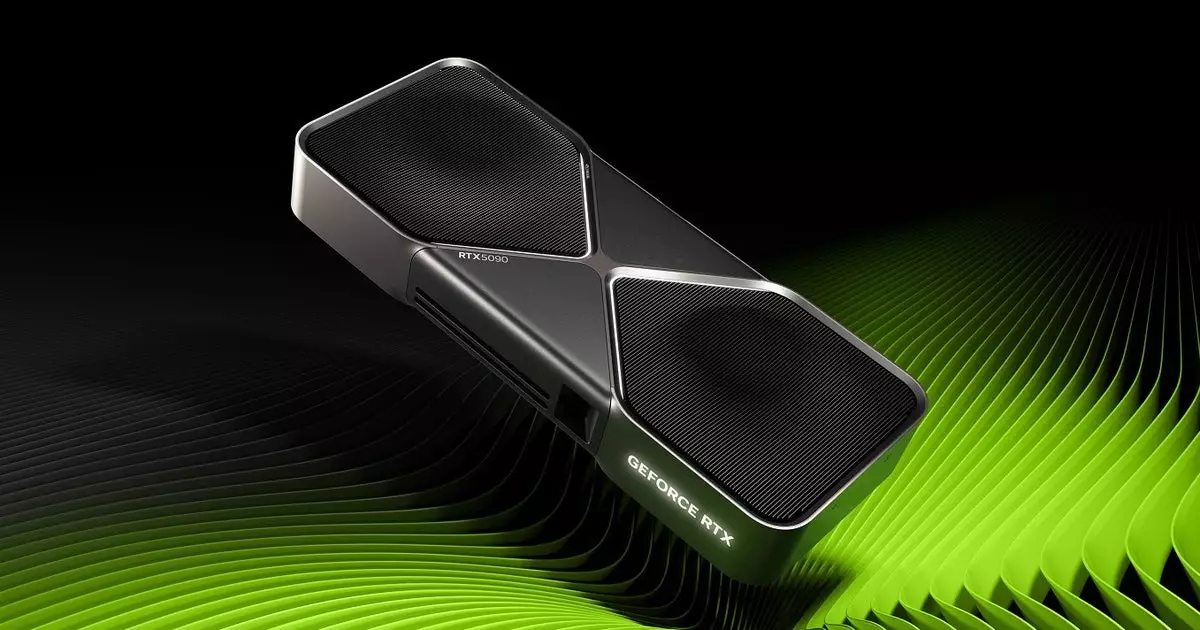The tech world is abuzz following Nvidia’s debut of the RTX 50 series graphics cards at CES 2025. Promising unprecedented performance and cutting-edge technology, these GPUs have generated considerable excitement. However, a closer examination reveals that the line between innovation and marketing ploys can often blur, especially when it comes to devices meant for enthusiasts who prioritize cutting-edge specs over practicality.
At the heart of the RTX 50 series, the RTX 5090 claims a staggering power consumption of up to 575 watts. Priced at a jaw-dropping £1939 / $1999, it’s undeniably a bold statement from Nvidia. Yet, the question looms large: do gamers really need such excessive power? At this astronomical price point, many consumers might find themselves wondering if they are being sold a solution to a problem that never existed. The high wattage could be interpreted as a red flag; while companies often tout performance gains, the environmental and financial implications of such voracious power consumption cannot be overlooked.
Contrast this with the more modest offerings in the lineup—the RTX 5080, RTX 5070 Ti, and RTX 5070. These models promise a lower entry barrier, appealing particularly to budget-conscious gamers. By positioning the RTX 5090 as a high-end outlier, Nvidia may be engaging in a strategic play to make its other offerings more palatable. Is this simply a way to showcase the RTX 5090 as a technological marvel, while the real-world performance of the lower-end GPUs remains to be seen?
Another significant announcement was the introduction of DLSS 4, an evolution of the already well-regarded DLSS 3. While it offers Multi-Frame Generation, claiming to produce up to three AI-generated frames for each rendered frame, skeptics might question the real-world application of such capabilities. The promise of increasing framerates and enhancing visual smoothness sounds appealing, but benchmarks comparing DLSS 4 against its predecessor raise concerns.
When figures are manipulated to showcase the new technology’s superiority, the validity of those claims comes under scrutiny. Far Cry 6 benchmarks without any upscaling still demonstrate a performance boost of 20-25% over earlier architectures. However, when Multi-Frame Generation is triggered, the results soar, creating an almost misleading narrative. This discrepancy can sow doubt in the minds of consumers who prefer honest comparisons over sensationalized claims.
Furthermore, while DLSS 4 may enhance performance under controlled conditions, gamers must ask themselves: will the added frames lead to a tangible improvement in gaming experience, or merely inflate benchmarks in promotional materials? If the quality of the rendered frames is compromised for the sake of quantity, the essence of gaming can potentially suffer.
In contrast to the flashy GPU announcements, Reflex 2 emerges as a potentially unsung hero of this launch. Utilizing advanced techniques to reduce input lag, Reflex 2 seems to offer a genuinely improved experience for gamers. By synchronizing CPU and GPU actions more effectively and employing predictive rendering, Nvidia claims to cut input lag significantly, allowing for a more responsive gaming experience. This could be a game-changer, especially for competitive gamers who rely on precise timing.
However, the fact that Reflex 2 will initially be available only alongside the top-tier offerings raises eyebrows. Moreover, the commitment to backporting Reflex 2 functionality to older RTX cards presents a mixed bag of expectations. If the technology truly enhances gaming experiences, why restrict it mostly to new buyers?
The introduction of the RTX 50 series raises important questions about the current trajectory of tech innovation versus marketing bravado. Are Nvidia’s efforts reflective of a genuine push towards enhancing the gaming experience, or are they merely a sophisticated marketing strategy to maintain dominance in a competitive market? As prices continue to soar and power consumption skyrockets, consumers must tread carefully in this landscape laden with enticing promises.
Ultimately, the RTX 50 series represents a critical moment for Nvidia. While the technology showcases some admirable leaps, one cannot help but question its practicality and the broader implications of such products on the environment and consumer wallets. As we dig deeper, the distinction between groundbreaking innovation and profit-driven engineering becomes ever more essential to discern. Gamers deserve clarity, and in this rapidly changing technological landscape, transparency is paramount.

